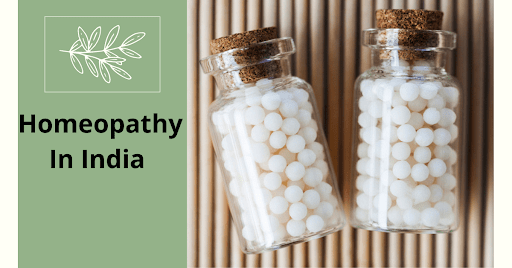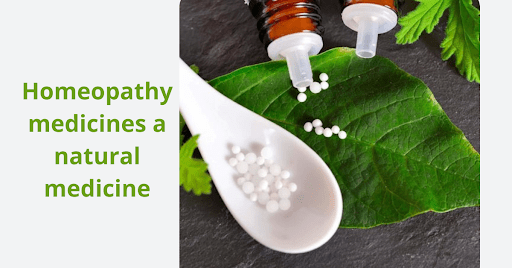Homeopathy is an alternative medical system dedicated to treating the root cause of an illness with the help of natural ingredients. Homeopathy is based on the belief of “like cures like”, which means that if an element creates some symptoms in a person in good health, then the same element given in a small amount can heal an afflicted person showing the same symptoms. For instance, hay fever causes watery eyes and a runny nose. Then an Allium Cepa or red onion can be used to cure that because onions can give you watery eyes and a runny nose as well. Homeopathic medicines depend upon the theory of potentisation. More dilution relates to more potency and, in turn, more efficacy. Dilution and shaking (or any type of agitation) enhance the potency of the solution.
History Of Homeopathy In India
The word “homeopathy” comes from the Greek words “Homois” (which means similar) and “pathos” (which means disease). It was conceived by the German physician Dr. Samuel Hahnemann in 1796. He published his findings through an article in the “Journal of Practical Medicine”, in which he focused on three methods of healing a particular disease with the help of homeopathy:
- Preventive Treatment: Determining and eliminating the root cause of illness
- Palliative Treatment: With the help of “Contraria Contrariis” or healing by opposites.
- Preferred Method: It is the widely used method of “like cures like”, which means that a particular substance that induces certain symptoms in an individual, given in tiny portions, might be able to cure the illness with similar symptoms.
Homeopathy in India was introduced by a French traveller, Dr. John Martin Honigberger, who was a disciple of Dr. Samuel Hahnemann. He visited India and effectively treated hundreds of patients. Among these patients were Maharaja Ranjit Singh (then ruler of the State of Punjab), who was suffering from paralysis in his vocal cords. Maharaja was so pleased with the results that he encouraged Dr. John Martin to continue and spread homeopathy in India. After that, several missionaries and servicemen started practising homeopathy and helped spread the word around the country.
In 1836, Dr Samuel Brookling started providing homeopathic medicines to civilians and army officers stationed in Madras.
The first homeopathic hospital in India was set up in Calcutta in 1851 under the patronage of Sir John Hunter Little, then Deputy Governor Of Bengal. It became the hub for spreading awareness about this alternative medicine.
In 1867, Dr Salzar of Vienna became the founder of homeopathic education in India, who influenced Dr. P C Majumdar to establish “Calcutta Homoeopathic Medical College”, the first homeopathic medical college in India.
It became a definite form of treatment in India after the Indian government recognised it in 1973 with the “Homeopathic Central Council Act 1973”.
Recognition In India
Homeopathy in India comes under the Department of AYUSH (Ayurveda, Yoga and Naturopathy, Unani, Siddha and Homoeopathy) of the Ministry Of Health. The Central Council Of Homeopathy (CCF) was established in 1978. There are over 2,00,000 doctors practising homeopathy in India, with more than 12,000 more passing out every year.
Nowadays, every individual with a background in science needs to pursue a five and half years course and training to have a licenced practice in homeopathy. The market cap of homeopathy in India stood at over $419M as of 2010, increasing 25 to 30% annually. That’s why the Indian government regulated the manufacturing of homeopathic medicines just like allopathy to keep an acceptable standard.
Myths And Facts
Homeopathy has a massive following around the world. Over 10% of the total Indian population depends solely upon this alternative medical system. But still, a massive portion of the world population believes in certain myths and misinformation about homeopathy.
Here are a few myths and facts regarding homeopathy and its principles:
- Myth: Homeopathy is not scientific medicine.
Fact: Like allopathy, homeopathy is also a proven medicine regulated by the Health Ministry of Government of India under the Department of AYUSH.
- Myth: Homeopathic medicines act slowly.
Fact: The time taken by a homeopathic medicine for treatment depends upon the type of disease and its extent. People think of homeopathy as a last resort, but the disease would have reached quite far by then. So the homeopathic medicine would take longer in execution.
- Myth: Homeopathy practitioners are not actual doctors.
Fact: Homeopathic practitioners like allopathic doctors require formal training. The course and internship duration for homeopathy is five and a half years, and the candidate must have a science background.
- Myth: Homeopathy is not regulated.
Fact: Homeopathy is a medical system under the Ministry of AYUSH, regulated by the Central Council Of Homeopathy (CCH).
- Myth: Homeopathy has several side effects.
Fact: As homeopathy medicines are formulated with the help of natural ingredients, there are not many side effects associated with them. Additionally, medications formed with the potencies above 3CH do not pose any side effects.
- Myth: Homeopathy is a self-medication system.
Fact: Self-medication is not advisable in any form of the medical system. Knowing a few popular names of medicines does not grant you expertise about the healing process. Always approach a certified practitioner regarding any illness.
- Myth: Homeopathy is not suitable for diabetic patients.
Fact: Homeopathic medicines are suitable for diabetic patients. The sugar pills are not nearly big enough to cause any issues with the patients’ health. In any case, you can also opt for taking medicine by diluting it with water.
If you would like to know more about Homeopathy or looking for an online homeopathic consultation with a certified practitioner, then visit Spring Homeopathy : Online Homeopathy, and our doctors will help you out.


